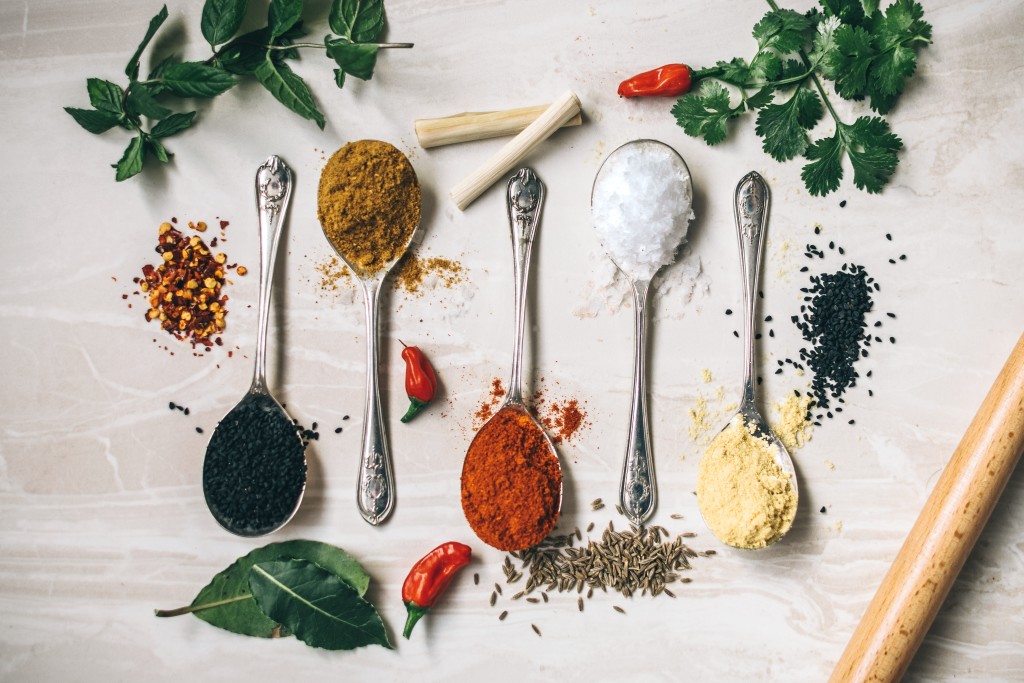In all of the major ancient systems of healing including traditional Chinese medicine, Ayurveda, Native American healing protocols, the taste of food and herbs has been recognized as a form of medicine. In each system, how taste are used to indicate healing is unique. By understanding how our bodies’ individual react to different tastes, we can get a better understanding of how we are being affected physiologically, and also how to eat to bring ourselves back into balance. The five flavors that should be a part of all of our meals include: sweet, salty, sour, pungent, and bitter. At various points in our lifespan we may find that we gravitate more to certain tastes, but if we overdo it, we can throw our system off balance. Below is a brief breakdown of how the each of the flavors affect your body so that you can be aware. As you read through, ask yourself if there are certain flavors you feel you eat in excess, or others you never eat at all. By making a mental note you can choose to actively balance your foods choices moving forward and maybe even try new options. -XO Raw Girl
Sweet foods, which also includes bland foods are high calorie foods that are heavy, provide high nutrient content in the form on fat, protein,carbs, and essential vitamins and minerals. Eating sweet or bland foods has a nourishing effect on the body and is also grounding and comforting. Consuming excess sweet/bland foods however can cause lethargy, sluggishness, reduce appetite, poor digestion, improper elimination, increase mucus production in the body and difficulty focusing. Some examples of sweet/bland foods include: animal fats, eggs, meat, milk, fruit and fruit juices, grains, nuts and seeds, root crops and winter squashes. Herbs include: cinnamon, fennel, goji berry, licorice, marshmallow, and shatavari.
Pungent foods which includes foods and herbs that are “spicy” are stimulating and can help to balance more potent flavors such as sweet and salty foods in dishes. Consuming pungent foods can stimulate digestion and assimilation and pungent aromatic herbs such as ginger, black pepper, and sage also help to relieve symptoms of gas and bloating. If you consume pungent foods in excess you can experience irritability, exhaustion, feel emotionally taxed or overstimulated. Some examples of pungent foods include: arugula, cabbage, coffee, horseradish, hot peppers, mustard greens, radishes, raw onions, leek, garlic, and watercress. Herbs include: basil, black pepper, cayenne, cinnamon, clove, cumin, ginger, mint, nutmeg, rosemary, sage, thyme, and turmeric.
Sour foods cause tissue contraction, can tone mucous membranes, and stimulate release of bile from the liver and gallbladder. The sour taste is generally cooling, moistening, and toning in small amounts and is helpful in digestion of fats, oils, and protein rich foods. Sour foods can also enhance If consumed in excess, sour foods can cause heat, aggravation the GI tracts, hunger, and low blood sugar symptoms. Excess can also result in skin conditions such as acne, eczema, psoriasis, boils, and aggravate arthritis. Some examples of sour foods include: berries, citrus, fermented dairy, fermented vegetables, some fruits such as green apples, grapes, plums, kombucha, miso. Pomegranates, tomatoes, vinegar, and wine. Herbs include: Hawthorne berry, hibiscus, rose hips. Rose petals, schizandra berry and sorrel.
Salty foods when eaten in moderation promote proper digestion and improve nutrient absorption. In excess, salty foods can irritate inflammation in the body or on the skin such as rashes, and cause emotional irritation, agitation. Too much salt also causes the body to retain water and can lead to edema, swelling, and increased blood pressure. Salt has a grounding, heavy, moistening, soothing, and warming effect in the body and when used in cooking it draws out other flavors. If you are nervous, struggle with anxiety, or have dry skin, hair, or nails you may benefit from consuming more salty foods if your blood pressure is not high. The best form of salt to consume is unprocessed and unrefined salt that is rich in minerals which are nourishing to the musculoskeletal system. Some salty foods include: anchovies, celery, smoked meat, hard cheeses, nettles, meat, spinach, olives, swiss chard, and sea vegetables. Herbs include: cumin, celery seed, cilantro, coriander, dill, parsley, and lovage.
Bitter foods may be the least popular foods to consume, but actually happen to be the most metabolically active of the five core flavors! Consuming bitter foods promotes detoxification, promotes hormone regulation, stimulates metabolic functioning and the breakdown and assimilation of nutrients. Bitter foods have a cooling, drying, and anti-inflammatory effect on the body and stimulate the entire digestive process. Beyond relieving digestive related symptoms such as acid reflux, heartburn, and other GI tract disturbances, getting in a little bitter every now and then can also support a healthy appetite, improve heart health, lower cholesterol, help with weight management, and improve blood sugar balance. Despite all of these amazing benefits, bitter foods tend to be the most neglected and are not staples in the Western or Standard American Diet. Some examples of bitter foods include: artichoke, bitter lettuces and salad greens, cocktail bitters, coffee, black tea, green tea, dark chocolate, dark leafy greens. Bitter herbs include: burdock root, caraway seeds, chamomile, coriander seed, dandelion root, fenugreek seed, orange peel, rosemary, sage, thyme,and yellow dock.
References:
Nickerson, B. W. (2017). Recipes from the herbalists kitchen. North Adams, MA: Storey Publishing.






